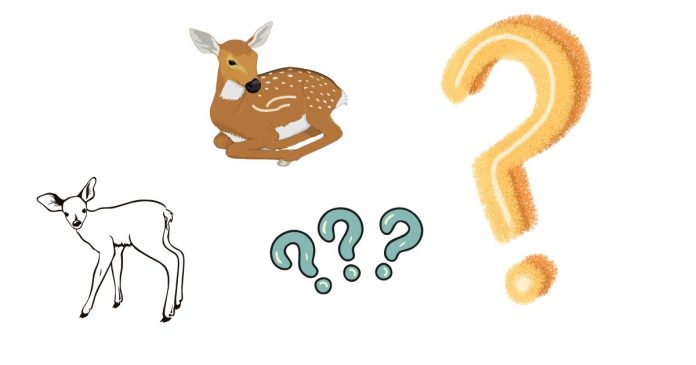What Do You Call a Young Deer?
In the animal kingdom, names often vary depending on the age, gender, or stage of development of an animal. When it comes to deer, the term for a young one is “fawn.”
The word “fawn” specifically refers to a deer in its earliest stage of life, typically within the first year. The term is derived from the Old French word faon, meaning “young animal,” which traces back to the Latin fetus, meaning “offspring.” This name evokes the delicate and vulnerable nature of these creatures in their infancy.
Characteristics of a Fawn
Fawns are easily recognizable by their small size, slender legs, and distinctive spotted coats. The spots, which resemble dappled sunlight filtering through trees, provide excellent camouflage against predators. This adaptation is crucial for their survival in the wild.
Newborn fawns are usually hidden by their mothers in tall grass or dense vegetation for the first few weeks of life. During this time, the fawn remains mostly stationary to avoid drawing attention. It relies on its ability to stay still and its camouflaged coat to evade predators.
Growth and Development
Fawns are born after a gestation period of about six to eight months, depending on the species. At birth, they weigh between 4 and 8 pounds (1.8 to 3.6 kilograms). They are nursed by their mothers and begin to eat solid food within a few weeks. By the time they are three to four months old, fawns start to lose their spots as they grow a thicker coat for the colder months.
By their first winter, most fawns are weaned and capable of foraging independently, though they may remain close to their mothers for additional protection and guidance until the next breeding season.
Other Names for Young Deer
While “fawn” is the most common term, young deer may also be referred to by other names depending on regional dialects or specific species. For example:
- In British English, “fawn” is widely used for red and fallow deer, but “calf” may describe young members of larger deer species like elk or moose.
- “Kid” is occasionally used, though this term more commonly applies to young goats.



